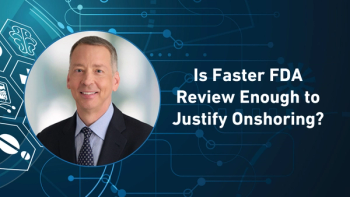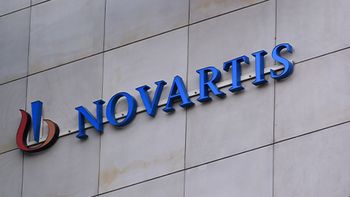In today’s commercial arena, pharma leaders are flooded with more data than ever, but too often, it’s like swinging chairs in every direction with no clear target. The challenge isn’t lack of information; it’s a lack of connection.
Traditional analytics models weren’t built for the speed, complexity, and scale of the modern health data ecosystem where every EHR signal, claims transaction, or digital touchpoint carries commercial value. Biopharma teams sit at the intersection of prescribing data, patient access metrics, and new technologies, yet disconnected systems keep them from making real-time moves at the point of care, where it matters most.
From my experience across provider networks, data platforms, and life sciences partnerships, I’ve seen one truth hold up in every match: the next competitive advantage won’t come from more data; it will come from smarter connections. When we integrate directly into the systems where physicians and patients already make decisions, we’re not just adding intelligence; we’re creating a new playing field for how engagement happens in healthcare.
Redefining commercial efficiency through connected intelligence
The era of commercialization isn’t about who has the most data. It’s about who knows how to link their moves across systems, teams, and moments of care. When information flows across clinical, access, and engagement channels, pharma brands get a full-ring view of what’s happening—and physicians and patients receive more relevant, actionable support at the moment of need.
Commercial excellence isn’t achieved by buying more technology, but rather, by uniting what you already have so every move connects seamlessly and compliantly. The companies mastering this balance of precision, compliance, and connection are the ones rewriting the playbook for commercial success.
From datasets to data-driven decisions
As data becomes more connected across health systems, insights evolve from static reports into living intelligence. The most forward-thinking commercial teams aren’t collecting more, they’re connecting better. By linking prescribing, payer, and engagement data, they gain the agility to adjust strategy in real time, not after the quarter closes.
This shift changes the role of analytics from observation to orchestration. Market access, marketing, and field operations can finally act from a shared, trusted view of what is happening in the care environment. Below are some examples of how connected intelligence creates real impact:
- Precision access enablement: Integrating prescribing and access data reveals where coverage barriers slow therapy starts, helping teams focus on interventions where they’ll move the needle most.
- Trusted, health system insights: Transparent, system-verified reporting shows who, where, and why decisions occur—so every message lands with intent, and every investment drives measurable outcomes.
- Seeing the why behind the what: Intent-based analytics detect prescribing signals weeks before pharmacy data appears, allowing accurate demand forecasting and early-adoption tracking. Combined with payer and pharmacy data, this foresight pinpoints bottlenecks before they become backlogs.
- Who and where to reach: Precision outreach replaces guesswork, guiding engagement toward the right specialists, offices, and care teams. When these capabilities converge, commercialization shifts from reaction to anticipation, driven by insight that lives where care decisions are made.
Turning fragmented signals into connected strategy
In today’s commercial arena, the biggest opponent pharma teams face isn’t a shortage of data—it’s the chaos created by signals flying in from every direction with no unified game plan. Data lives everywhere, but trust lives nowhere. Just like stepping into the ring without knowing your opponent’s next move, disconnected intelligence leaves teams guessing instead of executing.
The future advantage will belong to the organizations that can turn scattered signals into coordinated strategy. Too often, commercial teams are forced to react to lagging indicators—claims data that arrives weeks late, pharmacy reports that miss early intent, or fragmented field updates that tell only part of the story. By the time these signals land, the match is already in the later rounds.
But when intelligence is unified upstream—directly inside the systems where physicians and patients make decisions—everything changes. Suddenly, teams aren’t fighting blind. They’re seeing openings in real time, anticipating barriers, and making the right move.
This shift turns fragmented insights into a shared, trusted view. When clinical, access, and engagement signals align, the entire ecosystem becomes stronger: patients move through access friction faster, physicians get timely support, and payers gain the clarity they’ve been demanding.
And just like any great competitor, the commercial teams pulling ahead are the ones using real-time insight to shape their next move. Instead of reacting to market swings, connected intelligence helps them predict which physicians are on the verge of adopting therapy, where access hurdles will appear, and how to engage before momentum is lost. That’s the difference between playing defense and owning the match.
We’re entering an era where data doesn’t just describe what is happening—it calls the next play. In a landscape defined by speed, pressure, and constant competition, the companies that master connected strategy will be the ones raising their hands in victory.
Fast facts
Core challenge: Pharma isn’t suffering from a lack of data—it's suffering from disconnected data that limits real-time action at the point of care.
What’s changing: Modern commercialization demands intelligence that flows across clinical, access, and engagement systems, not static reports or siloed analytics.
The future belongs to the connected
As AI and interoperability evolve, the future won’t belong to the teams that collect the most data, it’ll belong to the ones who connect it best. The real transformation isn’t AI itself; it’s the systems that feed it. Intelligent, compliant, connected frameworks are what make AI valuable, measurable, and scalable across healthcare.
The pharmaceutical industry has spent years chasing more data. Now, the main event is about connection across care settings, systems, and stakeholders. Those who build trust inside existing workflows, where care and decisions happen, will stand tall as the new champions of commercialization.
The next phase of commercialization isn’t about adding more data. It’s about connecting what we already have in smarter ways within the existing healthcare systems. Because when care, access, and action are finally connected, data stops being just analytics and becomes intelligence that moves healthcare forward.
And in this next decade of healthcare, the winners won’t be the ones shouting the loudest—they’ll be the ones making the right connections, at the right time, in the right ring.
About the Author
Angelo Campano is the CEO of Flora Health, a healthcare technology company.





